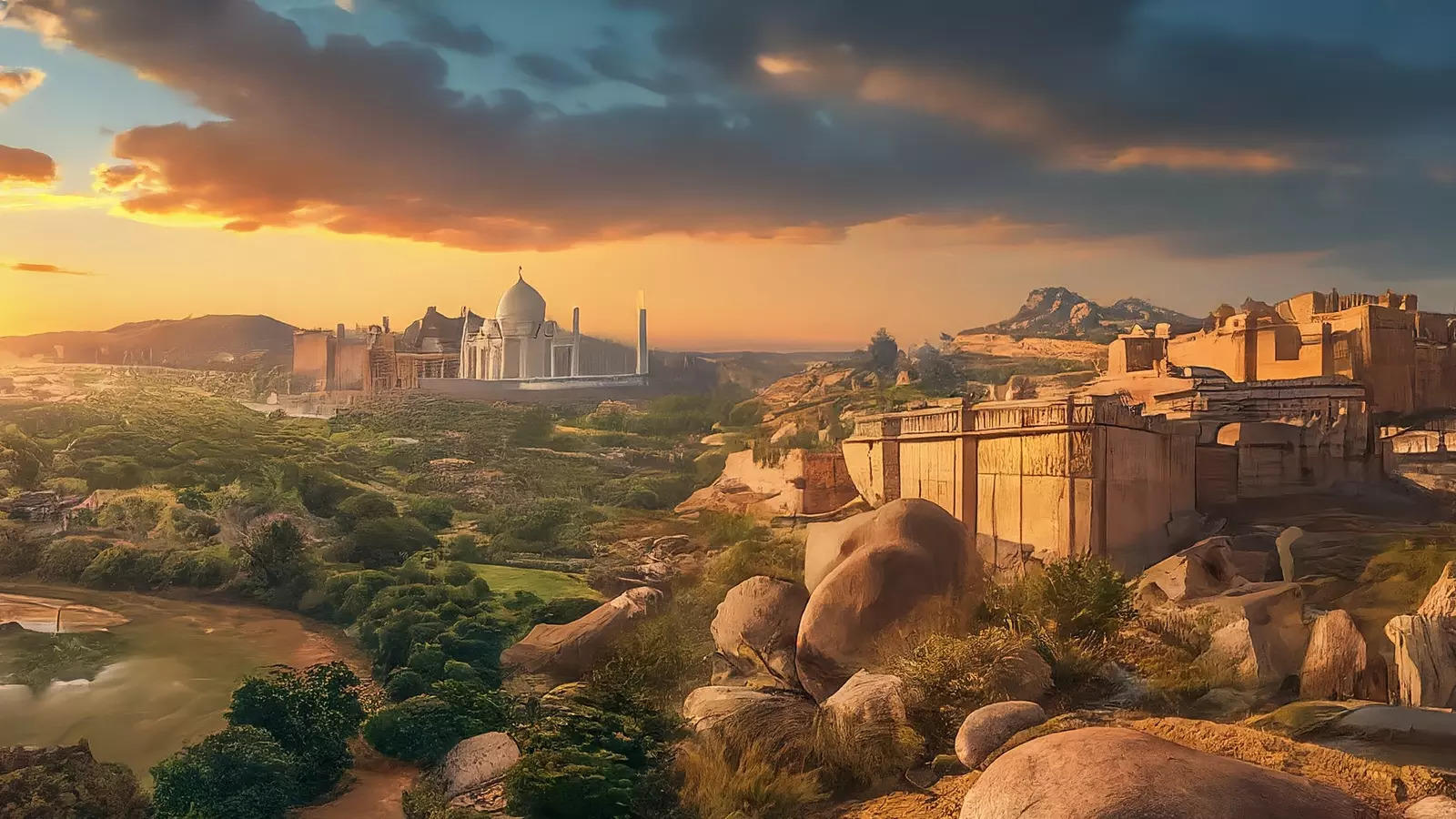Step Into History: India’s Most Breathtaking Heritage Sites

India is home to some of the most breathtaking heritage sites in the world, each reflecting the country’s rich history, diverse culture, and architectural brilliance. From ancient temples and majestic forts to grand palaces and timeless monuments, these sites narrate tales of a glorious past. Whether you are an avid traveller, history enthusiast, or someone looking to experience the soul of India, these heritage destinations offer an unforgettable journey through time. Visiting them is not just about admiring the structures but also about immersing yourself in the traditions, artistry, and stories they hold.
Taj Mahal – The Eternal Symbol of Love
One of the most iconic heritage sites in India, the Taj Mahal in Agra is a masterpiece of Mughal architecture. Built by Emperor Shah Jahan in memory of his beloved wife Mumtaz Mahal, this white marble mausoleum stands as a symbol of love and devotion. The intricate carvings, magnificent domes, and reflection on the Yamuna River make it a sight to behold. Whether viewed at sunrise or under the moonlight, the Taj Mahal never fails to mesmerise visitors from across the world.
Jaipur’s Amer Fort – A Royal Legacy
Amer Fort in Rajasthan is a stunning example of Rajput grandeur. Overlooking Maota Lake, this fort boasts a blend of Hindu and Mughal architectural styles. The Sheesh Mahal, or Mirror Palace, is particularly famous for its intricate mirror work, which glistens like stars in candlelight. Exploring the fort’s courtyards, gates, and tunnels takes visitors back to the era of Rajput warriors and their royal lifestyle.
Hampi – The Forgotten Kingdom
Nestled in Karnataka, Hampi is an ancient city filled with fascinating ruins from the Vijayanagara Empire. Once a thriving trade centre and capital, Hampi is now a UNESCO World Heritage Site. The impressive Virupaksha Temple, massive stone chariots, and intricate carvings on the pillars showcase the city’s architectural excellence. Surrounded by unique boulder landscapes, Hampi is a paradise for history lovers and adventure seekers alike.
Konark Sun Temple – The Architectural Marvel
The Konark Sun Temple in Odisha is a remarkable tribute to India’s advanced engineering and artistry. Designed in the shape of a grand chariot with intricately carved wheels and horses, this temple is dedicated to the Sun God. The sculptures depict scenes from daily life, mythology, and celestial beings, offering an extraordinary glimpse into India’s artistic brilliance. The temple stands as a timeless testament to devotion and creativity.
Khajuraho Temples – A Celebration of Art and Spirituality
The Khajuraho Group of Monuments in Madhya Pradesh is renowned for its exquisite sculptures and intricate carvings. Built by the Chandela dynasty, these temples beautifully blend spirituality with sensuality. The sculptures depict gods, goddesses, celestial nymphs, and human emotions in a way that reflects the artistic freedom of the era. These temples remain a fascinating destination for art and history enthusiasts.
Ellora and Ajanta Caves – Stories Etched in Stone
Maharashtra is home to the remarkable Ellora and Ajanta Caves, two of the most significant Buddhist heritage sites in India. The Ellora Caves feature rock-cut temples dedicated to Hindu, Jain, and Buddhist faiths, with the Kailasa Temple standing as a monolithic wonder. The Ajanta Caves, on the other hand, are famous for their mesmerising murals and paintings depicting the life of Buddha. These caves are living testaments to India’s spiritual and artistic heritage.
Mysore Palace – The Grandeur of Royalty
Mysore Palace in Karnataka is a breathtaking blend of Indo-Saracenic architecture. With its domes, arches, stained glass windows, and grand halls, the palace is a symbol of opulence and regal splendour. During the Dussehra festival, the palace is illuminated with thousands of lights, creating a magical spectacle. Walking through its corridors gives a glimpse into the royal lifestyle of the Wodeyar dynasty.
Rani ki Vav – The Queen’s Stepwell
Rani ki Vav in Gujarat is an architectural wonder and a UNESCO World Heritage Site. Built in the 11th century by Queen Udayamati, this stepwell is a fine example of ancient water conservation methods and intricate craftsmanship. The detailed carvings of gods, goddesses, and mythological figures make it a remarkable heritage site that showcases the splendour of Indian engineering.
Chola Temples – The Grandeur of Dravidian Architecture
Tamil Nadu is home to the Great Living Chola Temples, built by the Chola dynasty. These temples, including the Brihadeeswarar Temple in Thanjavur, are a marvel of Dravidian architecture. Towering gopurams, massive sculptures, and detailed carvings make them a significant part of India’s cultural heritage. The temples continue to be active places of worship and stand as a tribute to the Chola rulers’ artistic vision.
Fatehpur Sikri – The City of Victory
Fatehpur Sikri in Uttar Pradesh was once the capital of the Mughal Empire under Emperor Akbar. This well-preserved ghost city features magnificent structures like Buland Darwaza, Jama Masjid, and Panch Mahal. The intricate blend of Persian, Islamic, and Indian architectural styles adds to its grandeur. Fatehpur Sikri remains an impressive example of Mughal ingenuity and vision.
India’s heritage sites are more than just historical landmarks; they are windows into the past, offering stories of kings, dynasties, faith, and artistic excellence. Each monument, temple, fort, or palace reflects the spirit of its era and continues to inspire generations. Exploring these heritage destinations is a journey through time, where history comes alive through stunning architecture, intricate carvings, and timeless traditions.
Next Story